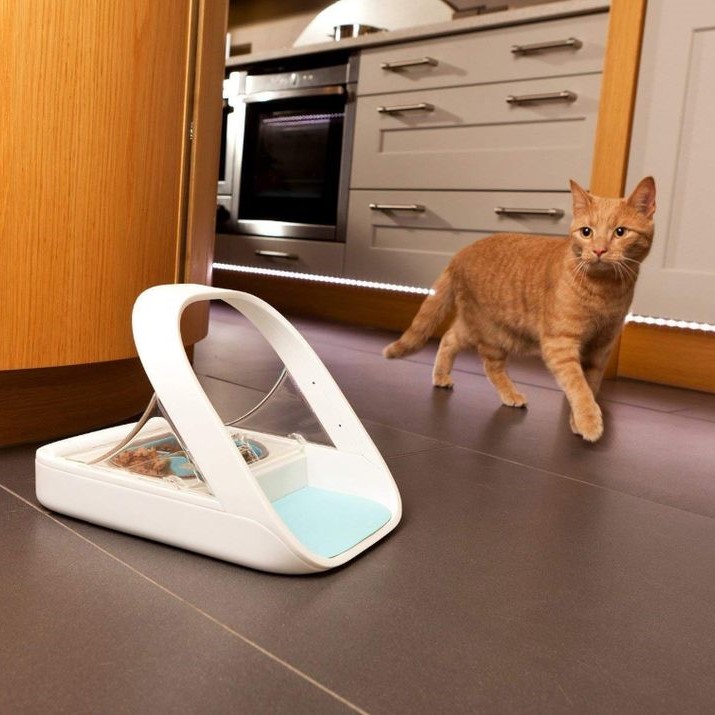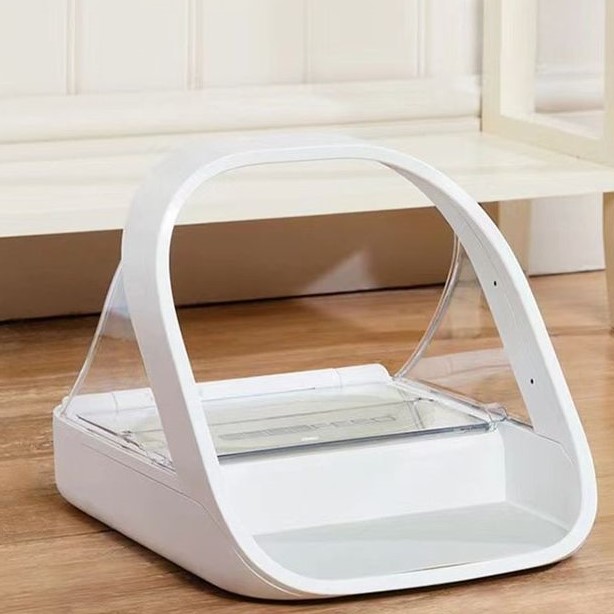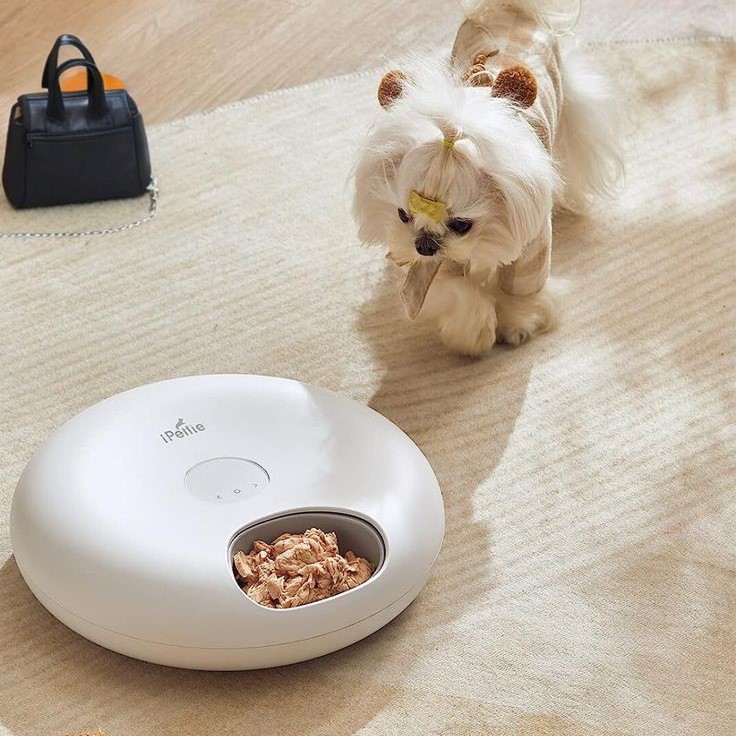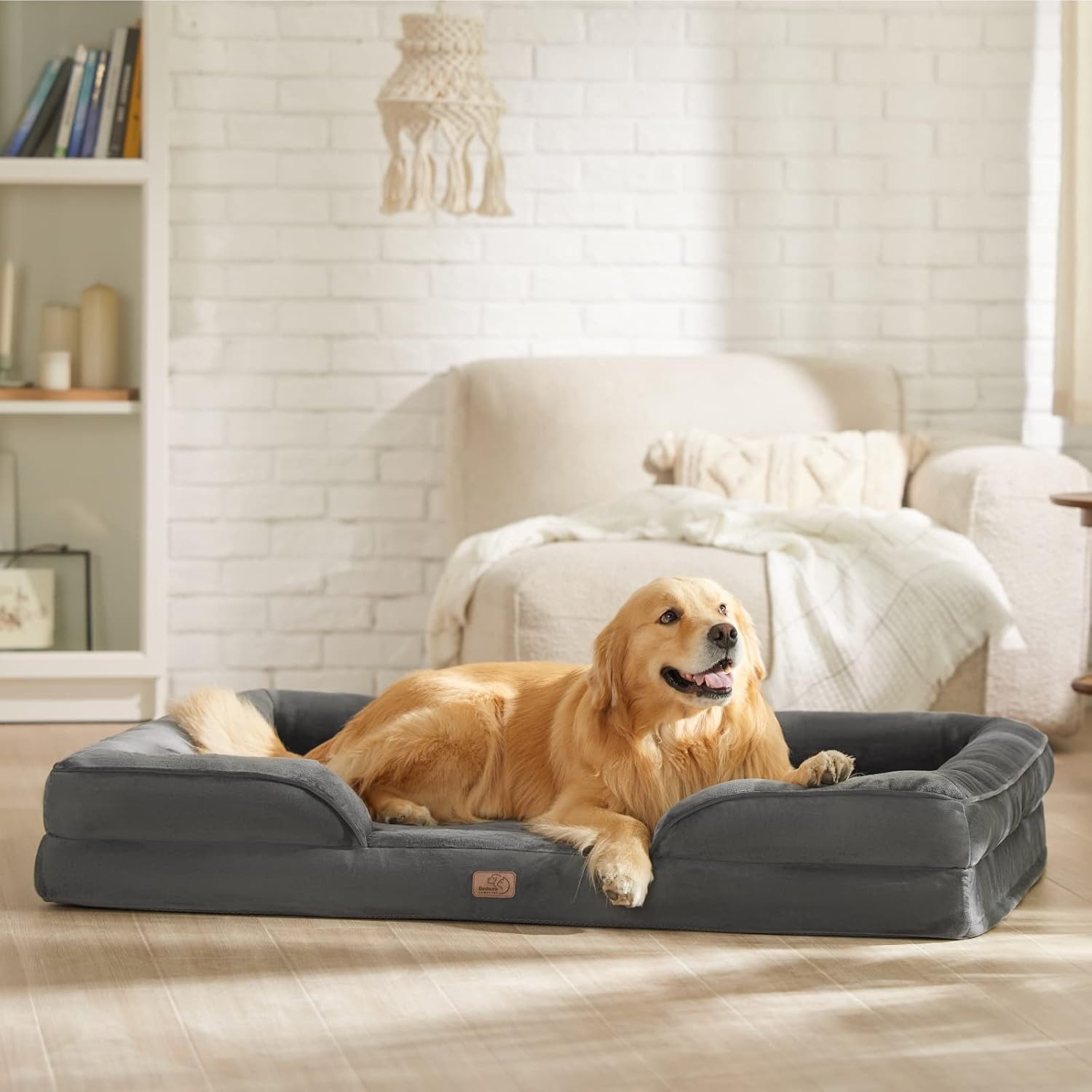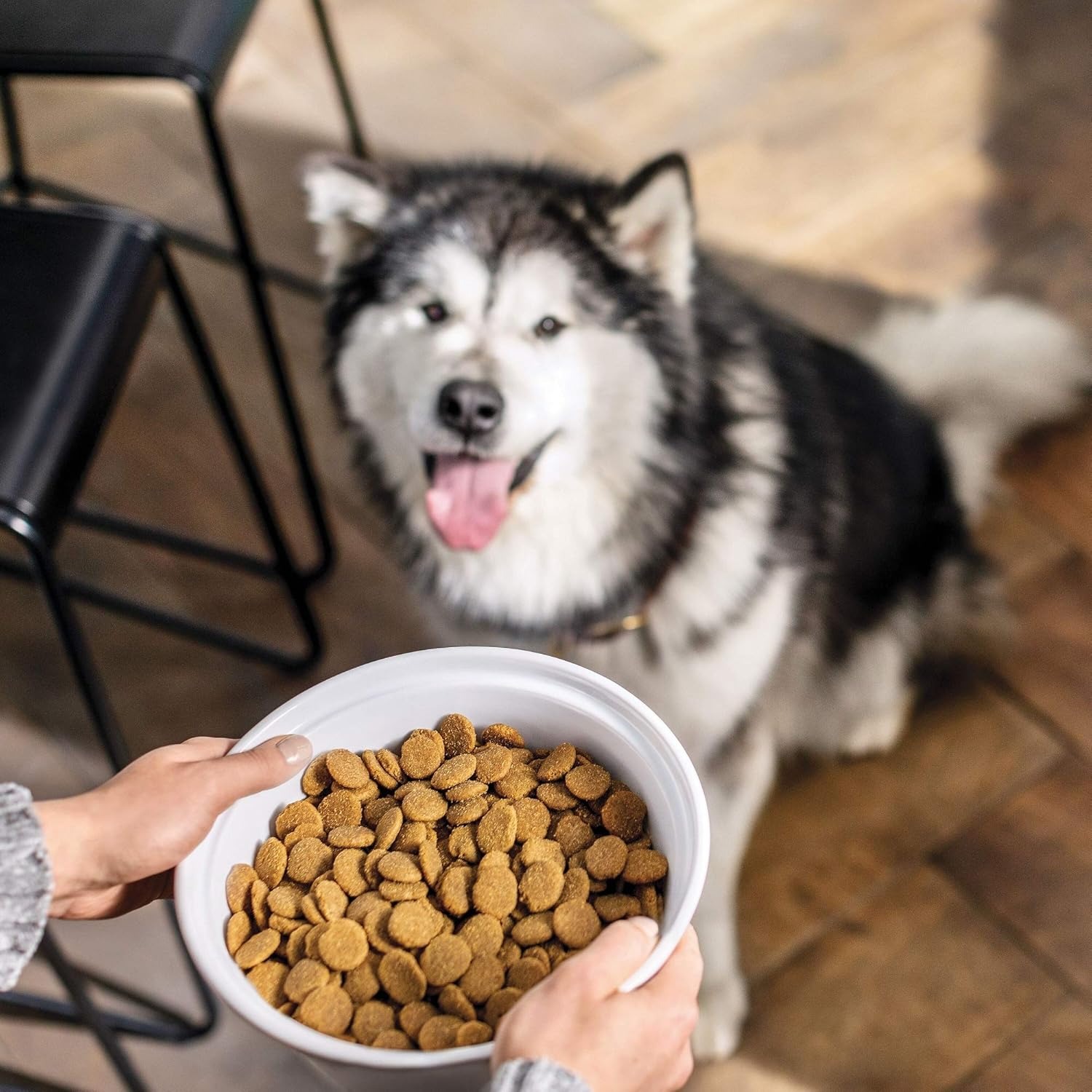What is a Microchip Pet Feeder?
A microchip pet feeder is a smart device meant for feeding pets. It uses advanced technology to identify individual pets and provide access to their food securely. These feeders are ideal for households with multiple pets or pets requiring specific feeding schedules.
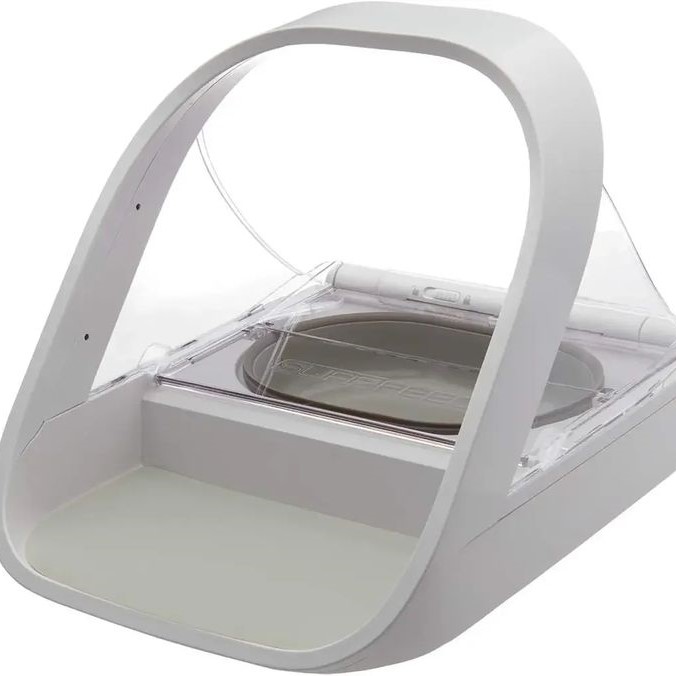
Features of a Microchip Pet Feeder
Microchip pet feeders come with unique features that simplify pet feeding:
- Selective Access: The feeder opens only for pets with recognized microchips or RFID tags.
- Portion Control: Allows precise control over food quantity for healthier eating habits.
- Secure Lid Design: Prevents unauthorized access from other pets or pests.
- Customizable Settings: Adjust feeding times, portions, and pet recognition based on needs.
- Ease of Cleaning: Removable bowls and covers simplify cleaning and maintenance.
- Battery or Plug-In Options: Some feeders offer flexibility in power sources for convenience.
These features make microchip pet feeders versatile and efficient in managing your pet’s meals.
How Microchip Technology Works in Pet Feeders
Microchip pet feeders rely on embedded sensors and computer logic to operate. Here’s how the technology works:
- Microchip Detection: The feeder scans for your pet’s implanted microchip or RFID tag.
- Activation: Once identified, the feeder unlocks and grants access to food.
- Signal Processing: The built-in microchip reader transmits identification data to the device’s processor.
- Automatic Closure: After your pet finishes eating or moves away, the lid closes automatically.
This process ensures feeding accuracy while preventing food theft between pets. By using these feeders, you can cater to your pet’s dietary needs while maintaining a clean and organized feeding routine.
Benefits of Using
Microchip pet feeders offer numerous advantages for pet owners. From dietary control to minimizing food theft, these devices simplify mealtime and improve pet well-being. Below are key benefits:
Feeding Pets with Specific Dietary Needs
Microchip pet feeders allow precise control over a pet’s meals. This is essential for pets with allergies or medical conditions requiring special diets. The feeder ensures only the intended pet accesses its food. This prevents accidental exposure to ingredients that could harm your pet.
For households with multiple pets, a microchip pet feeder makes it easy to manage individual diets. It ensures that each pet eats only what is meant for them, reducing the risk of overfeeding or underfeeding.
Preventing Food Theft Between Pets
Food theft is a common problem in multi-pet homes. One pet might eat another’s food, leading to unhealthy habits. Microchip pet feeders solve this by opening only for the recognized pet’s microchip or tag.
This selective access prevents dominant pets from stealing food. It also ensures shy pets get their fair share of meals. By eliminating food theft, you maintain harmony among pets while preserving their dietary routines.
Promoting Portion Control and Healthy Eating
Portion control is crucial for keeping pets healthy and maintaining their ideal weight. Microchip pet feeders allow you to pre-set meal sizes tailored to your pet’s needs.
By regulating portions, these feeders help avoid overeating. Smaller, accurate servings encourage healthier eating habits over time. Portion control also aids in preventing obesity, reducing the risk of related health issues.
Using a microchip pet feeder simplifies mealtime while boosting your pet’s overall health and happiness.
Top Brands and Models
Choosing the right microchip pet feeder can be challenging with so many options available. Understanding the top brands and models can help you make a better decision.
Comparing Popular Microchip Pet Feeders
Several popular microchip pet feeders stand out for their reliability and innovative features. Here are some of the best-known options:
- SureFeed Microchip Pet Feeder: Known for its selective access, simple design, and high durability. It efficiently manages feeding for pets in multi-pet homes.
- PetSafe SmartFeed: Offers smartphone integration to adjust feeding schedules and monitor meals. It’s great for tech-savvy pet owners.
- OurPets WonderBowl Selective Feeder: Features RFID-tag compatibility for secure feeding. Its compact design suits smaller spaces.
- WOpet Automatic Feeder: Focuses on portion control and easy-to-use settings. It is ideal for managing dietary needs.
These feeders differ in price, size, and functionality, but all aim to simplify mealtime for your pets.
Features to Look For When Shopping for a Pet Feeder
When choosing the best microchip pet feeder, consider these essential features:
- Selective Access: Ensure the feeder reliably recognizes your pet’s microchip or RFID tag to stop food theft.
- Portion Control: Look for models with adjustable portion sizes to fit your pet’s dietary needs.
- Ease of Cleaning: Choose feeders with removable bowls and covers that simplify cleaning and upkeep.
- Power Options: Decide between battery-operated or plug-in feeders based on your home setup.
- Durability: Opt for feeders made of sturdy materials to withstand daily use.
- Customizable Feed Settings: Ensure the feeder allows changes to feeding times and amounts for flexibility.
Considering these features will help you purchase a feeder that matches your pet’s requirements. Investing in the right model ensures your pets have healthier mealtime routines while reducing your stress.
How to Set Up and Use a Microchip Pet Feeder
Setting up a microchip pet feeder can be straightforward. Following the proper steps ensures smooth operation and convenience.
Step-by-Step Setup Guide
- Choose the Right Location: Place the feeder in a quiet, accessible area. Avoid areas with high foot traffic.
- Power Up the Feeder: Plug in the feeder or insert the necessary batteries. Check that it’s ready to operate.
- Register Your Pet’s Microchip: Use the feeder’s setup instructions to pair your pet’s microchip or RFID tag. Ensure proper recognition.
- Adjust Feed Settings: Program feeding schedules and portions to match your pet’s dietary needs.
- Fill with Food: Pour your pet’s food into the designated bowl. Avoid overfilling.
- Test Operation: Test the feeder by having your pet approach it. Confirm that it opens correctly.
- Monitor Performance: Observe the feeder during the first few uses. Ensure smooth functioning.
Tips for Training Your Pet to Use It
- Introduce Gradually: Allow your pet to familiarize themselves with the feeder before activation.
- Use Positive Reinforcement: Reward your pet when they approach or use the feeder.
- Guide Your Pet: Show your pet how to access food in the feeder. Be patient.
- Monitor Behavior: Ensure your pet feels comfortable using the device without stress.
- Be Consistent: Stick to the routine you establish to build trust and familiarity.
With proper setup and training, your microchip pet feeder will become a reliable mealtime solution for your pet.
Common Issues and Troubleshooting
Microchip pet feeders provide convenience but may sometimes encounter issues. Knowing common problems and solutions helps maintain smooth operation.
Handling Microchip Recognition Problems
Microchip recognition problems can hinder feeder functionality. Here are practical tips to address these issues:
- Verify Microchip Compatibility: Ensure the feeder supports your pet’s microchip or RFID tag format.
- Check Microchip Placement: Misplaced chips may not be detected. Confirm proper chip location on your pet.
- Clean Sensors: Dust or dirt on sensors can disrupt scanning. Regularly clean the feeder’s detection area.
- Update Feeder Settings: Re-enter your pet’s microchip data as per the manufacturer’s guidelines.
- Avoid Interference: Keep the feeder away from electronic devices that may cause signal disruptions.
- Restart the Device: A simple reset can resolve temporary glitches.
If problems persist, contact the feeder’s customer support for expert guidance.
Maintenance Tips for Longevity
Proper maintenance ensures your microchip pet feeder stays functional for years. Follow these simple steps:
- Clean Regularly: Wipe down the feeder and remove food residues weekly to prevent malfunctions.
- Inspect Moving Parts: Check lids, motors, and trays for wear and tear. Replace damaged parts promptly.
- Test Battery or Power Source: Replace batteries or inspect power cords regularly to ensure consistent operation.
- Store in a Safe Place: Avoid areas prone to moisture, extreme temperatures, or heavy foot traffic.
- Follow Manufacturer Guidelines: Adhere to user instructions regarding cleaning methods and usage limitations.
Routine care helps prevent breakdowns and extends your feeder’s lifespan. Staying proactive ensures mealtime remains smooth and hassle-free.
Are Microchip Pet Feeders Worth the Investment?
Deciding whether a microchip pet feeder is worth the investment requires evaluating cost and benefits. These feeders provide various conveniences while improving pet care routines. Understanding where they excel helps determine their value for your household.
Cost vs. Long-Term Benefits
Microchip pet feeders can be expensive upfront. Prices often range from $50 to $200 or more. However, the features they offer justify their price for many pet owners.
- Reduced Food Waste: These feeders prevent other pets from eating food not intended for them. That saves money over time.
- Health Benefits for Pets: Portioned meals reduce the risk of obesity and related health problems. Healthy pets need fewer vet visits.
- Convenience for Owners: Automated feeding schedules save time and eliminate the stress of manual feeding.
- Durability and Longevity: Many models are built to last years, ensuring long-term utility.
Over time, these benefits can outweigh the initial purchase cost. Owners often find the peace of mind and enhanced pet well-being worth the investment.
Scenarios Where They’re Most Useful
Microchip pet feeders are ideal in certain situations. For pet owners facing specific challenges, these feeders simplify mealtime management.
Multi-Pet Homes
- Prevention of Food Theft:
- In households with multiple pets, one common issue is food theft, where a dominant pet may consume another’s food. Microchip pet feeders address this problem by ensuring that only the specific pet with the corresponding microchip can access the food.
- This feature helps create a more harmonious environment among pets, reducing conflicts and stress during mealtimes.
- Meeting Dietary Needs:
- Each pet may have different dietary requirements, whether due to age, health conditions, or specific nutritional needs. Microchip feeders allow pet owners to customize feeding schedules and portions for each pet.
- By preventing food theft and ensuring each pet receives the intended diet, these feeders contribute to better overall health and wellness for all animals in the home.
Special Diets
- Selective Feeder Access:
- For pets that require restricted diets—such as those with allergies, sensitivities, or certain medical conditions—microchip pet feeders provide a solution. Only the pet that needs access to specific food can reach it, while keeping harmful ingredients away from those who should not consume them.
- This targeted feeding approach is essential for managing special diets effectively, enabling pet owners to ensure that their pets receive the appropriate nutrition without risk of contamination.
- Avoiding Harmful Ingredients:
- In addition to basic dietary requirements, some pets may have severe allergies or health conditions that necessitate avoiding specific ingredients. Microchip feeders prevent unauthorized pets from accessing these specialized diets, which could contain allergens or other harmful components.
- This level of control is particularly beneficial for pets with chronic health issues, as it ensures their unique dietary needs are consistently met.
Owners with Busy Schedules
- Automated Feeding Solutions:
- For pet owners with hectic lifestyles, finding time for regular feeding can be challenging. Microchip pet feeders enable automated feeding, allowing owners to schedule meals in advance.
- This automation ensures that pets are fed on time, even when their owners are occupied with work, errands, or other commitments.
- Care During Absences:
- The convenience of automated feeding means that owners can go about their daily lives knowing their pets are well cared for. This alleviates guilt over leaving pets alone for extended periods and helps maintain a consistent feeding schedule.
- Automated feeders may also allow for remote control or monitoring, giving busy pet owners peace of mind about their pets’ well-being.
Pets with Weight Issues
- Controlling Portions:
- Obesity is a growing concern in pet health, leading to various chronic conditions. Microchip pet feeders enable precise portion control, ensuring that pets receive the right amount of food tailored to their specific needs.
- By setting pre-measured portions, owners can manage caloric intake effectively, which helps in weight management and overall health.
- Encouraging Healthy Eating Habits:
- With controlled feeding, pets can develop healthier eating habits. Rather than free-feeding from a communal bowl, pets can focus on their designated meals, promoting mindfulness during mealtimes.
- This structure encourages pets to eat at regular intervals, aiding digestion and reducing the likelihood of hunger-related behaviors, such as begging or scavenging.
Outdoor Spaces
- Secure Lids for Food Protection:
- Microchip pet feeders often come with secure lids designed to keep food safe from external pests, such as rodents or insects. This protection is particularly important for outdoor setups where food might otherwise attract unwanted animals.
- These secure lids not only help maintain cleanliness but also ensure the safety of the food, preventing contamination and spoilage.
- Maintaining Cleanliness:
- Keeping food safe from pests helps maintain a clean environment around the feeder. This is crucial in outdoor areas where debris and mess can lead to hygiene issues.
- By minimizing exposure to contaminants, microchip feeders help pet owners maintain a neat and sanitary space for their pets, promoting a healthier living environment.
If your pet’s care requires precision, a microchip pet feeder is a worthwhile tool. Considering specific scenarios allows you to make an informed decision before investing.
Alternative Pet Feeder Options
While microchip pet feeders are innovative, there are alternative feeders available. These feeders suit different budgets and purposes. Exploring non-microchip options helps you choose the best fit for your furry friends.
Exploring Non-Microchip Pet Feeder
Non-microchip pet feeders vary widely in functionality and design. They include manual and automatic options:
- Gravity Feeders: These use gravity to dispense food as your pet eats. They are simple and affordable, suited for pets with free-feeding habits.
- Timer-Based Automatic Feeders: These feeders have timers to release food at set intervals. They’re ideal for scheduled meals but lack individual pet recognition.
- Programmable Feeders with App Control: Some smart feeders allow you to control feedings using a smartphone app. These offer convenience without needing pet-specific microchips.
- Feeding Stations with Lids: Designed to prevent food contamination, these stations keep food secure but don’t restrict specific pets.
- Puzzle Feeders: These feeders engage your pet mentally by combining feeding with interactive challenges. They slow eating and reduce overeating risks.
Each type of feeder serves different needs depending on your pet’s habits and your household requirements.
Comparing Pros and Cons of Each Option
Understanding the pros and cons of alternative feeders is key to choosing the right one:
- Gravity Feeders
- Pros: Affordable, simple to use, no power required.
- Cons: No portion control or schedule customization, unsuitable for pets needing dietary restrictions.
- Timer-Based Automatic Feeders
- Pros: Allows meal scheduling, good for portion control.
- Cons: Limited features, no selective access for multi-pet households.
- App-Controlled Feeders
- Pros: High convenience, remote management, programmable schedules.
- Cons: More expensive, may require technical setup.
- Lidded Feeding Stations
- Pros: Keeps pests away, protects food from spoilage.
- Cons: Doesn’t stop food theft among pets, manual adjustments needed.
- Puzzle Feeders
- Pros: Promotes mental stimulation, slows fast eaters.
- Cons: Requires training, may not work for all pets.
Alternative feeders offer more affordable or specialized options. They may lack the precision of microchip pet feeder but are still effective in many scenarios. Consider your pet’s behavior, health needs, and your feeding goals when choosing the best feeder.






